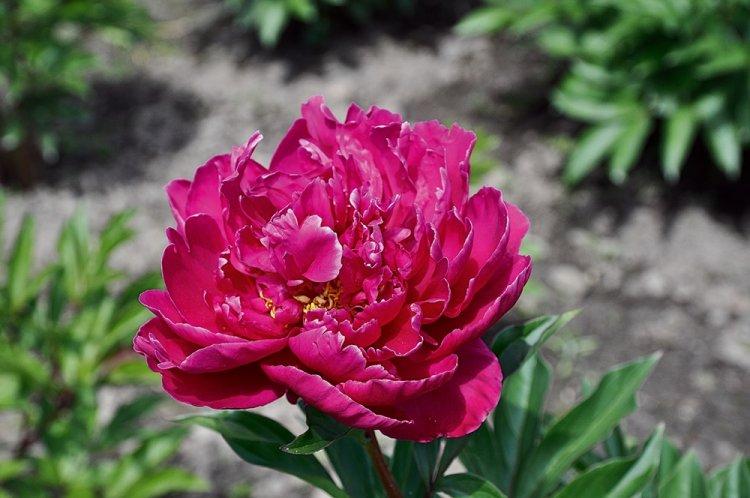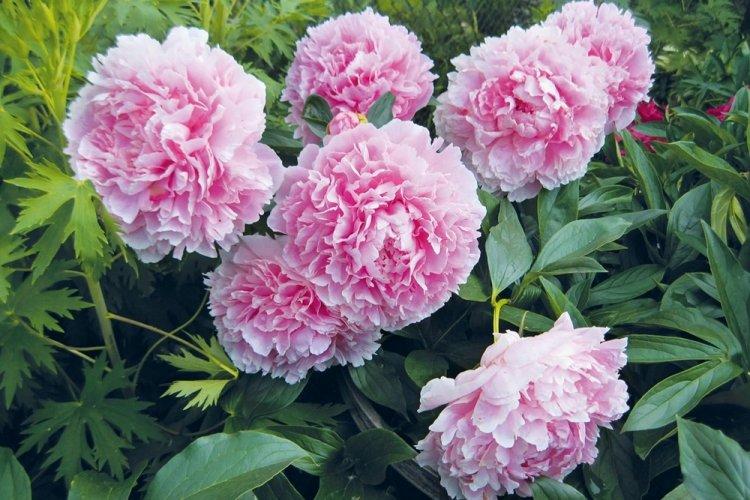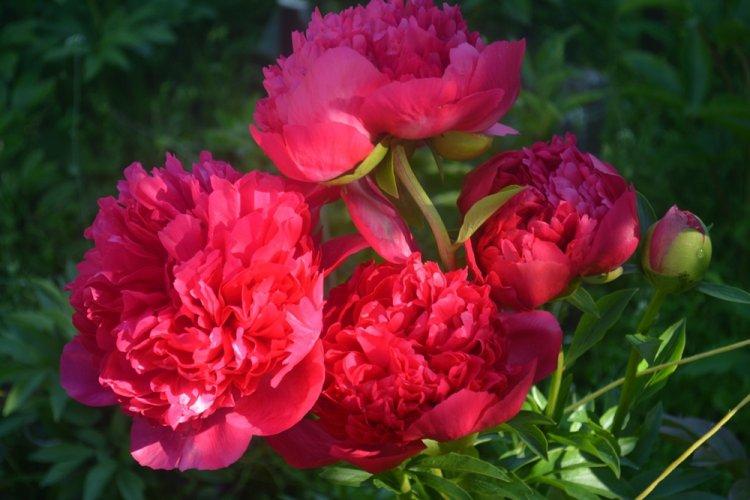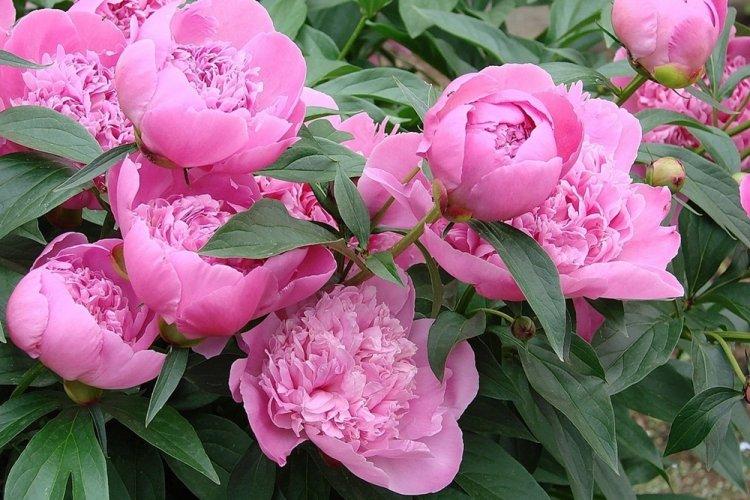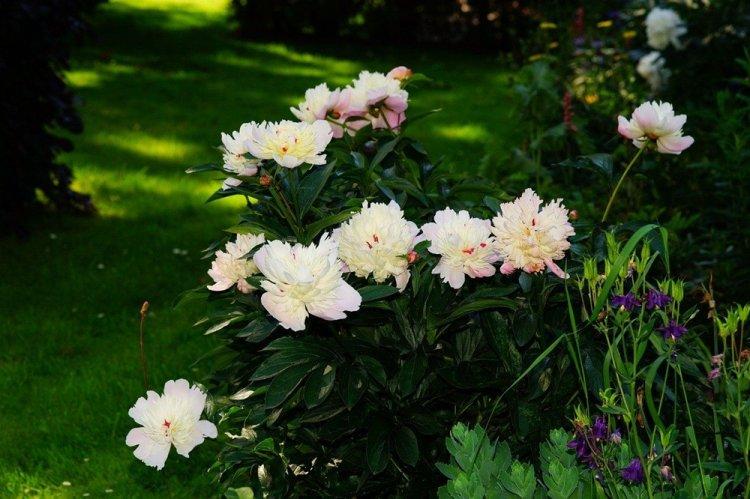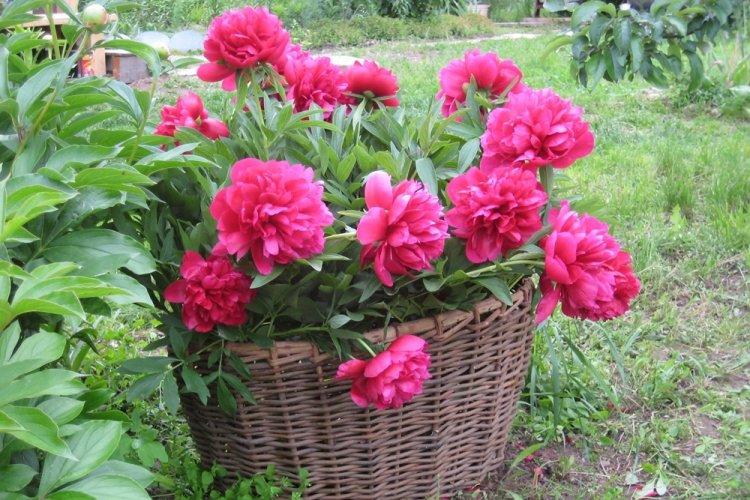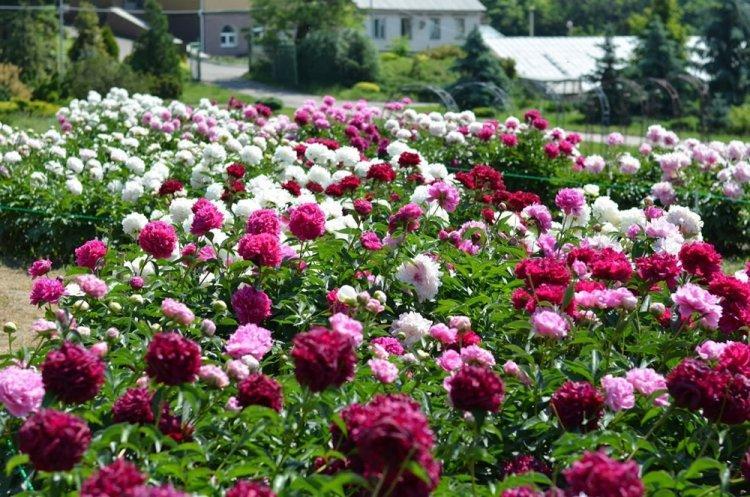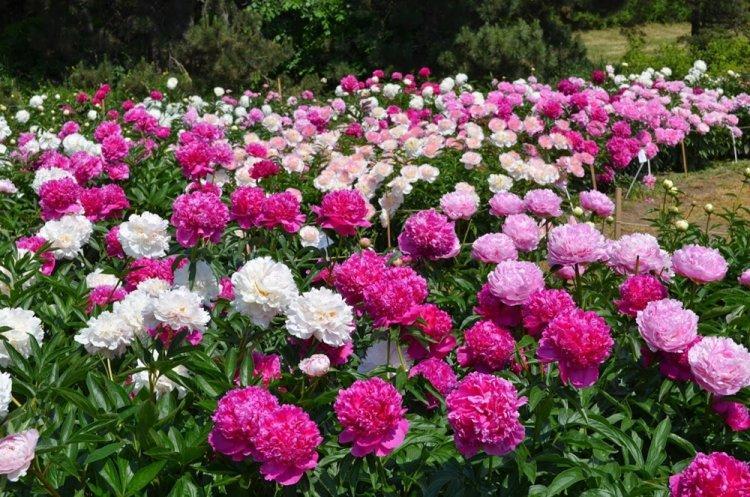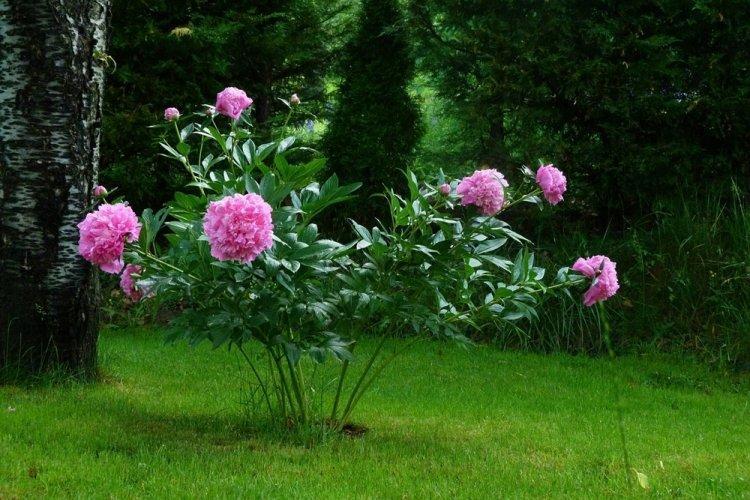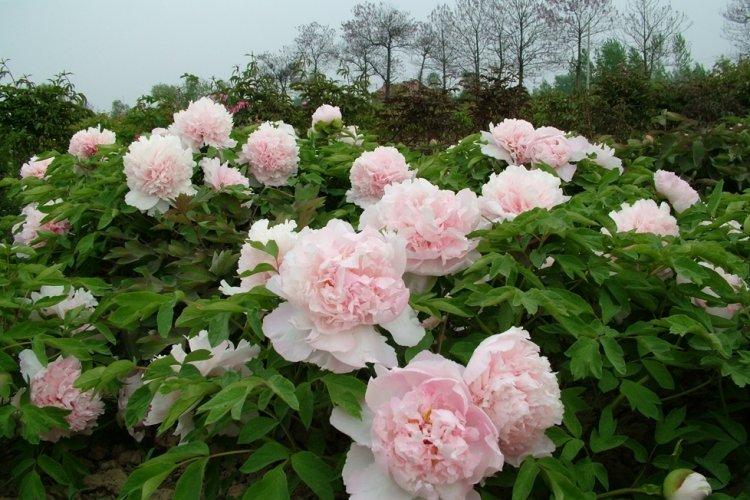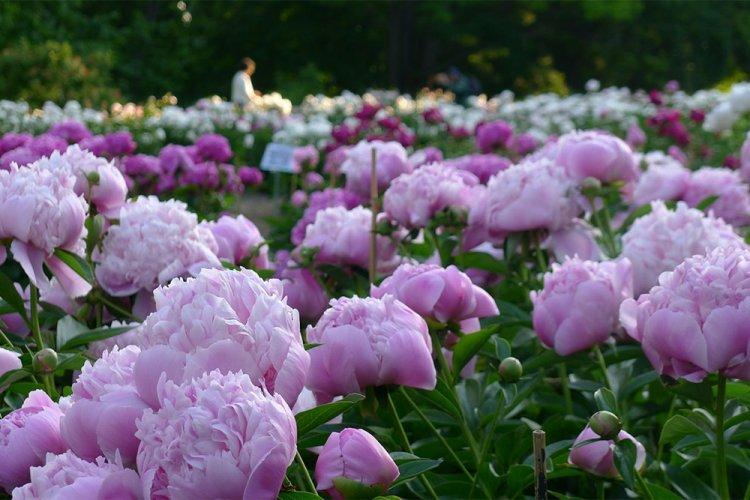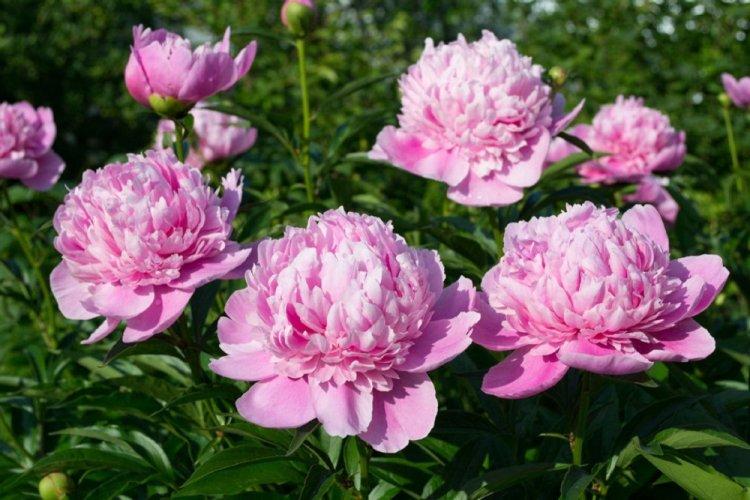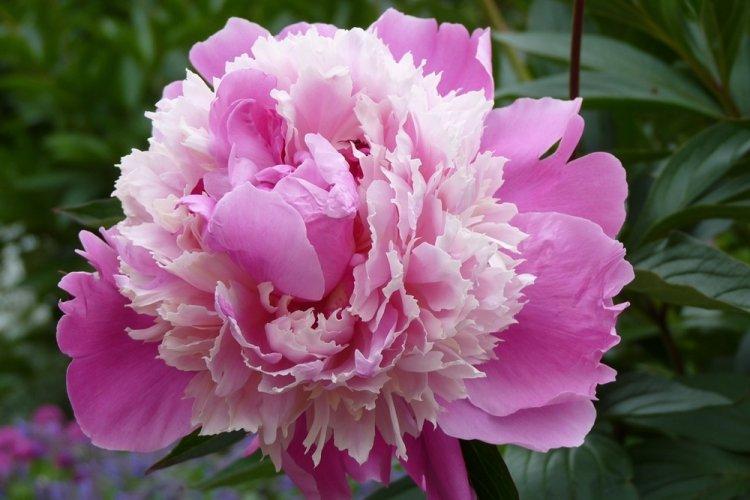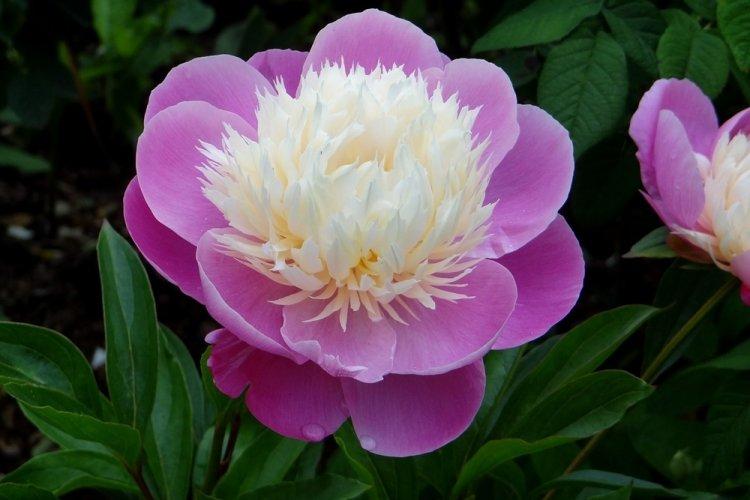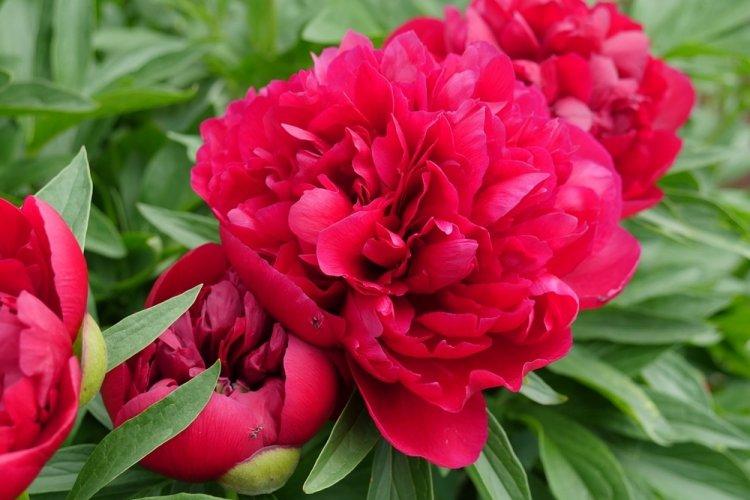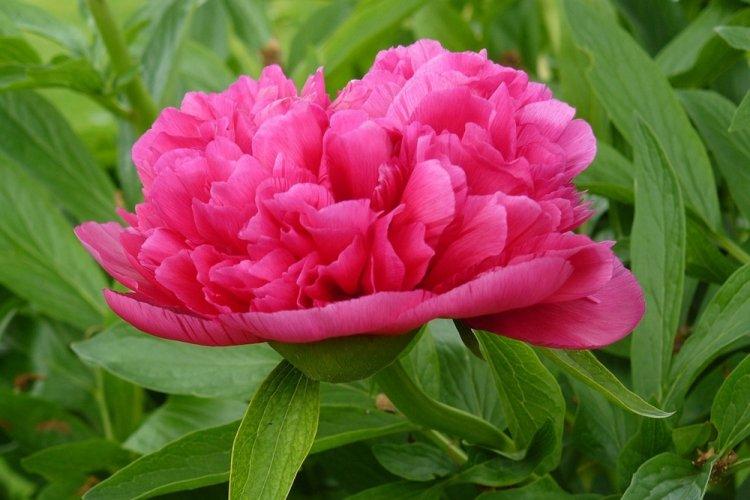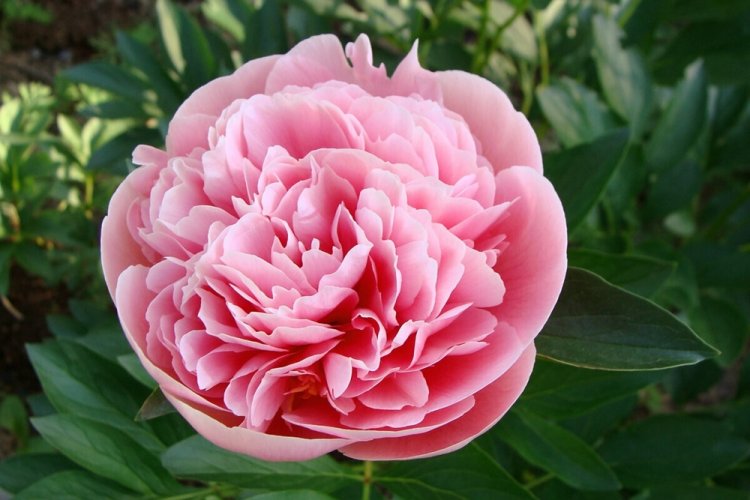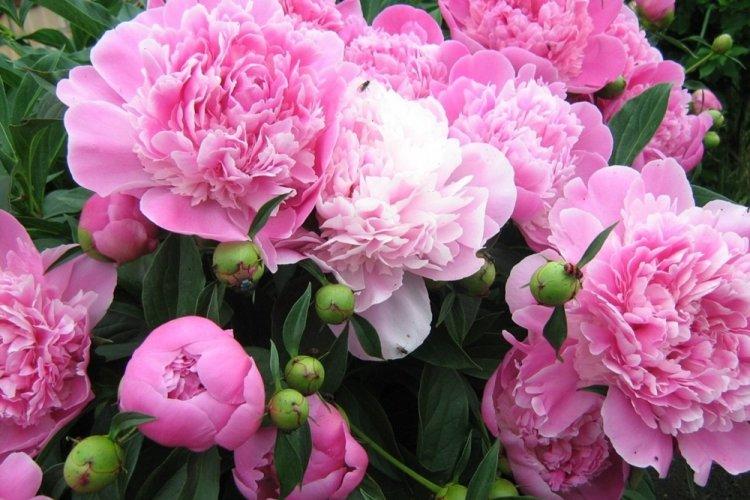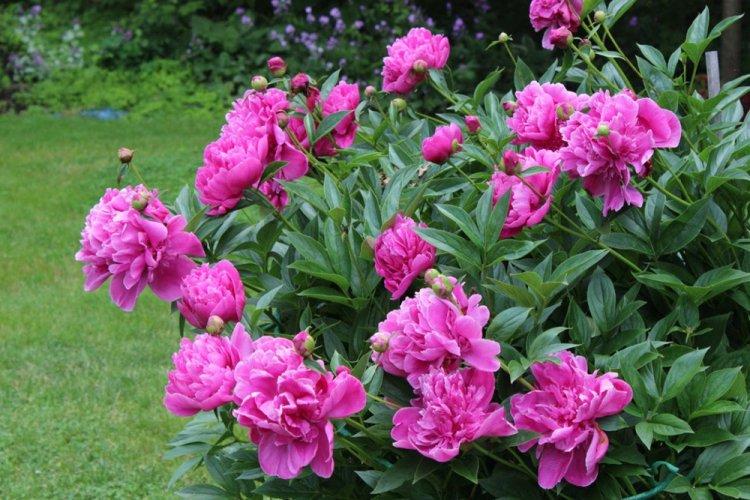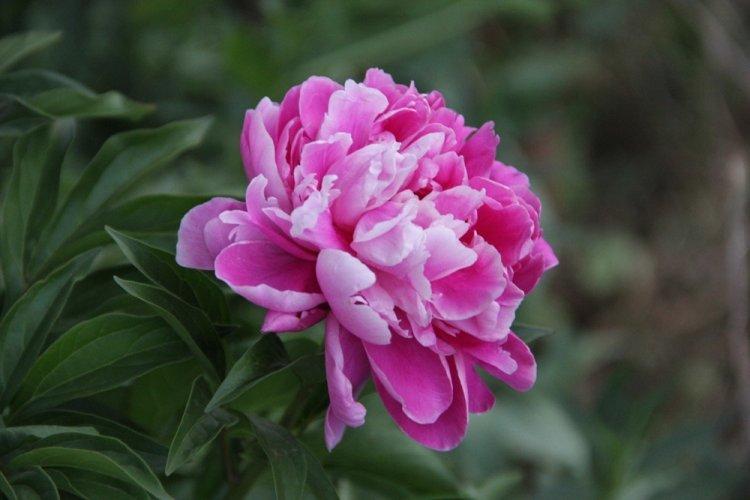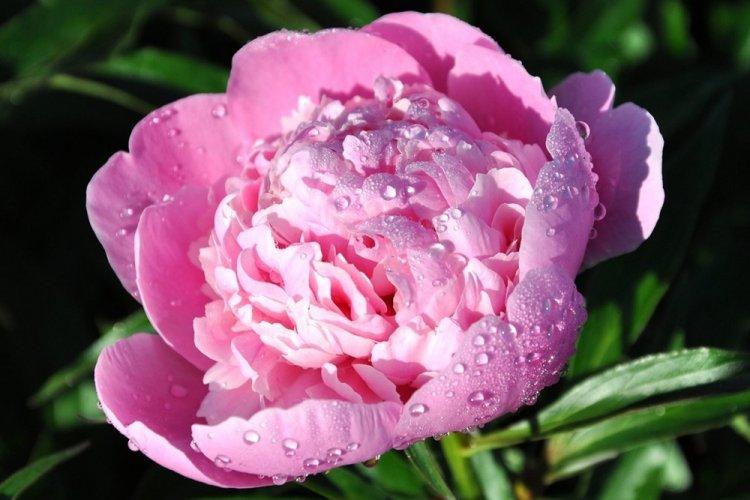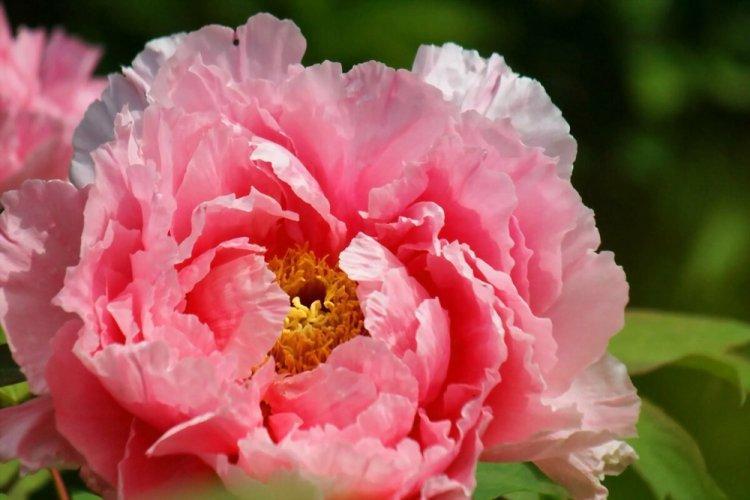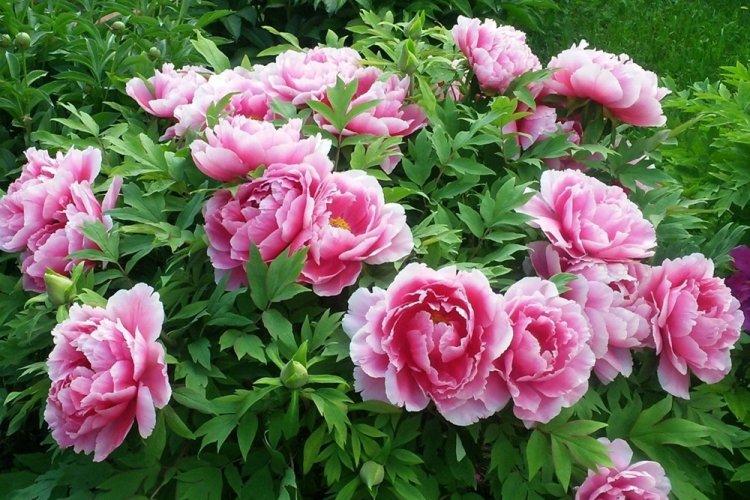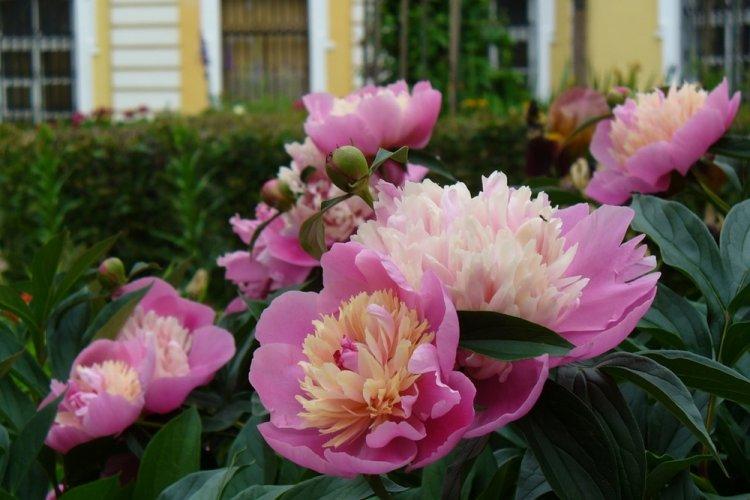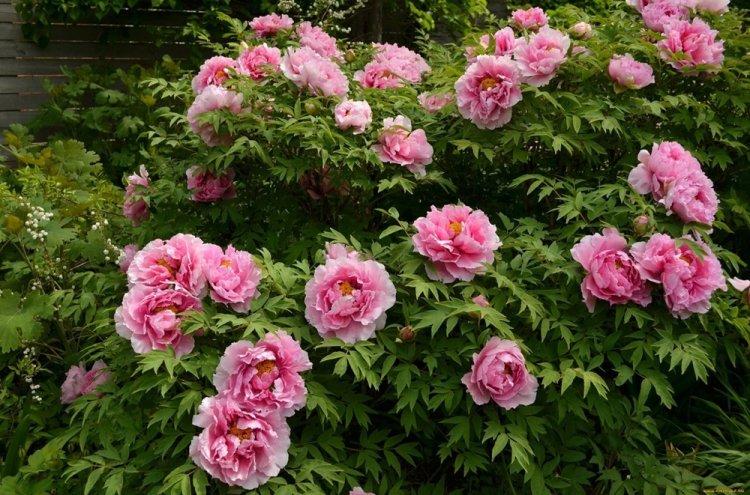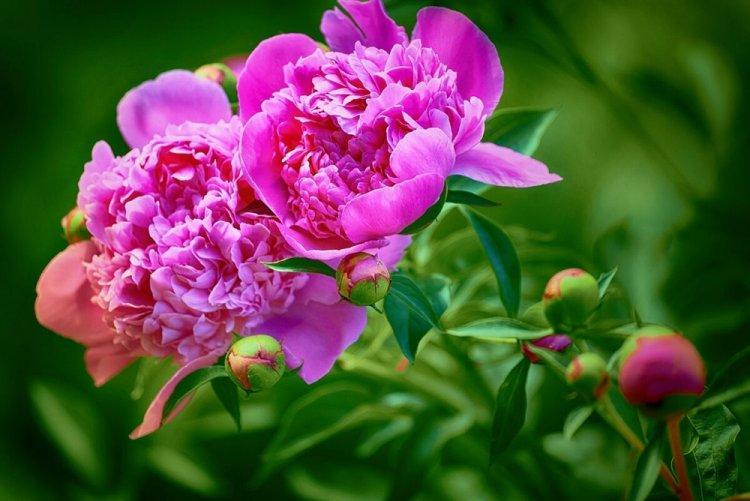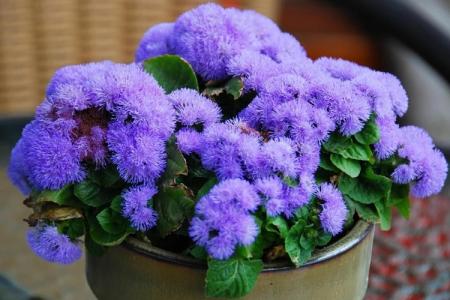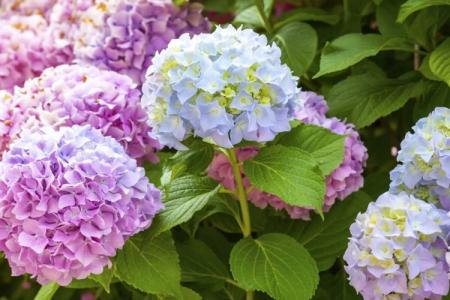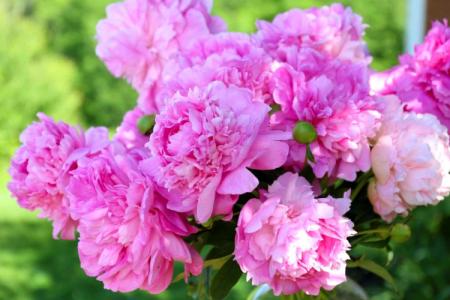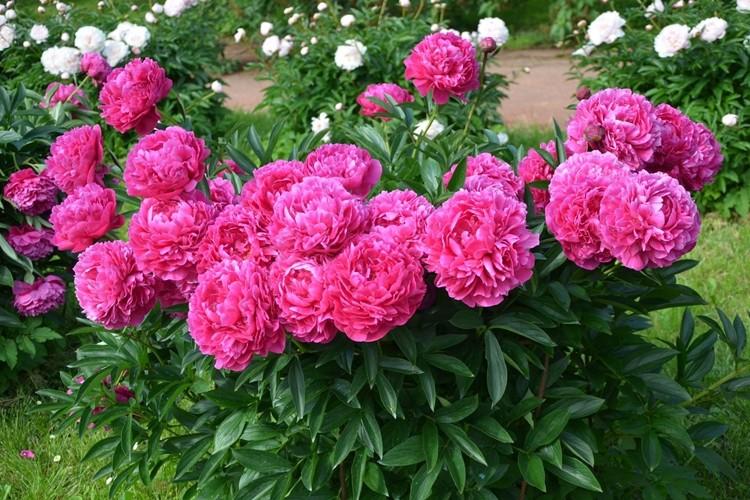
The beauty of peonies does not leave indifferent even experienced flower growers with many years of experience. Tall shrubs with large flowers are good along droshky, fences and just in landscape compositions. Each variety has its own unique aroma and its own structure of delicate terry inflorescences. Let's tell you more!
general information
Peony is an unusual herbaceous perennial, the upper decorative part of which dies off for the winter, and wakes up again in the spring. He has one of the most powerful and developed rhizomes among all garden flowers. Tuberous storage roots accumulate nutrients, which are extracted by small and thin suction roots. And the adventitious processes help the flower to grow and self-renew every year.
Peonies are able to grow in one place for 10-15 years, and at the same time they do not cause trouble. The flowers range in diameter from 15 to 30 cm, so they are classified into small, medium and large-flowered. Flowering lasts from early spring to summer - on average, up to 20 days, depending on the variety.
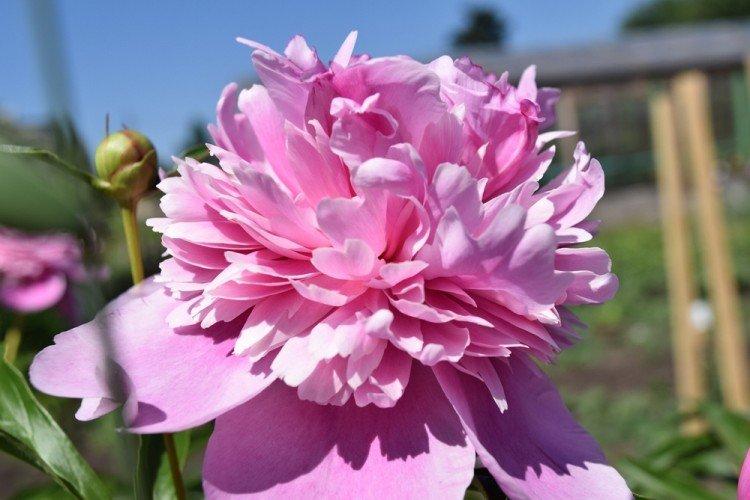
Types of peonies
The huge variety of peony varieties can be divided into three large categories. Herbaceous species are compact, dense, with a powerful rhizome and a variety of flowers. Treelike lignify over the years and do not die off for the winter. Breeding hybrids combine the properties of both categories.
Crown peonies
In crown peonies, the petals are arranged in three expressive tiers, which form the crown. The upper ones are the most delicate, the middle ones are thinner and narrower than the others, and the lower ones form an expressive substrate. The shade of the middle tier of the petals may differ.
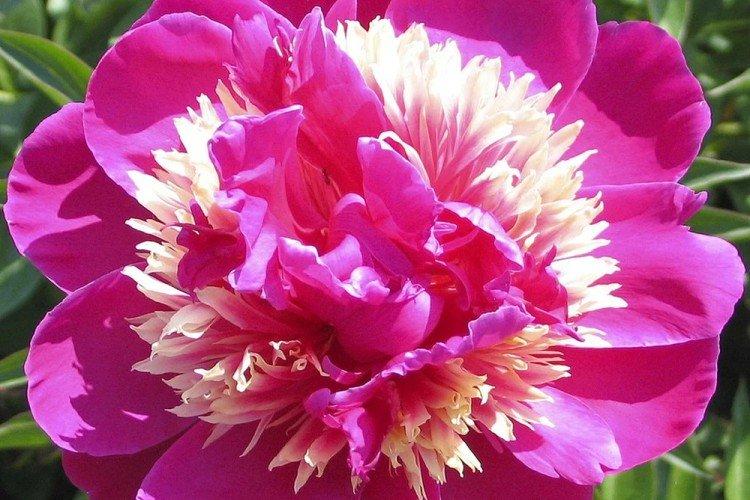
Terry peonies
Terry peonies are large, showy, with spherical volumetric flowers. Among them there are many bomb-shaped, spherical and hemispherical varieties. Pay attention to the delicate creamy Pink Cameo and graceful lilac Monsieur Jules Elie.
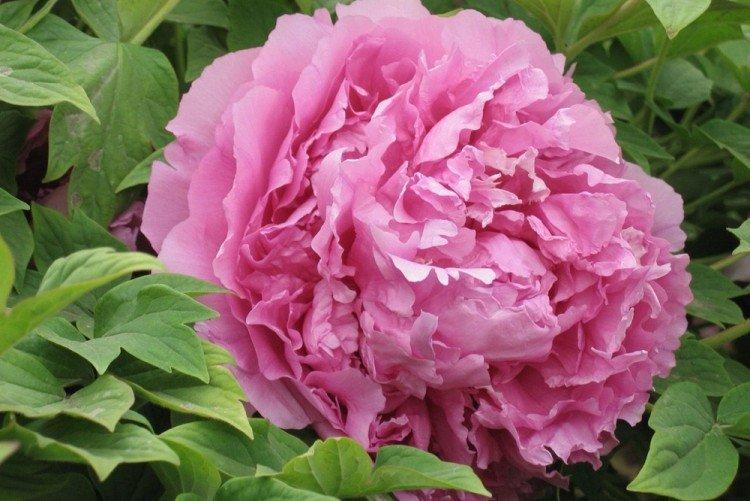
Semi-double peonies
The flowers of semi-double peonies are formed by about seven rows of petals, between which the stamens are hidden. Among them there are very beautiful early varieties, for example - the pink Ann Berry Cousins. Notable is the luxurious white Miss America with huge flowers up to 25 cm.
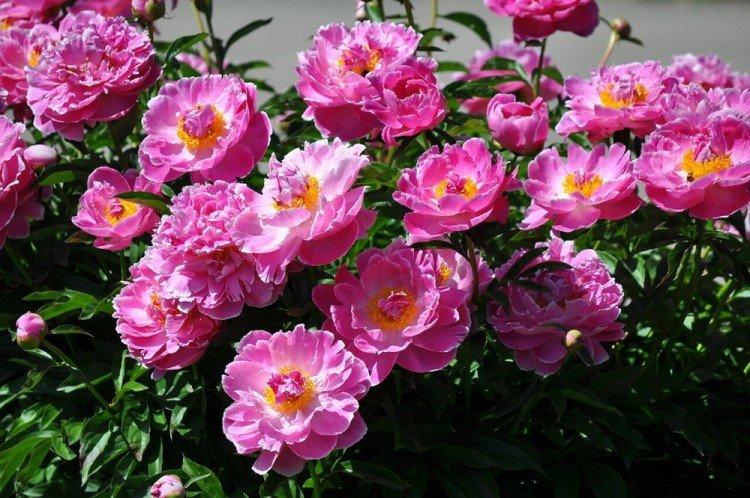
Non-double peonies
These are large flowers with one or two rows of petals. Large stamens can be seen in the middle, attracting bees and other beneficial insects. Among non-double peonies, there are subspecies with atypical corrugated leaves.
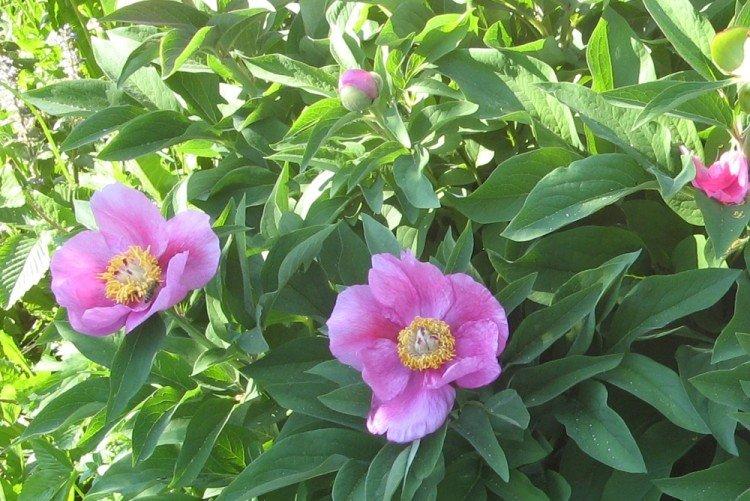
Pink peonies
As the name suggests, their flowers resemble large roses. Wide, large petals grow in several layers, but they are all the same size. There are several varieties in the category with an islet of stamens in the middle - they are also called semi-pink.
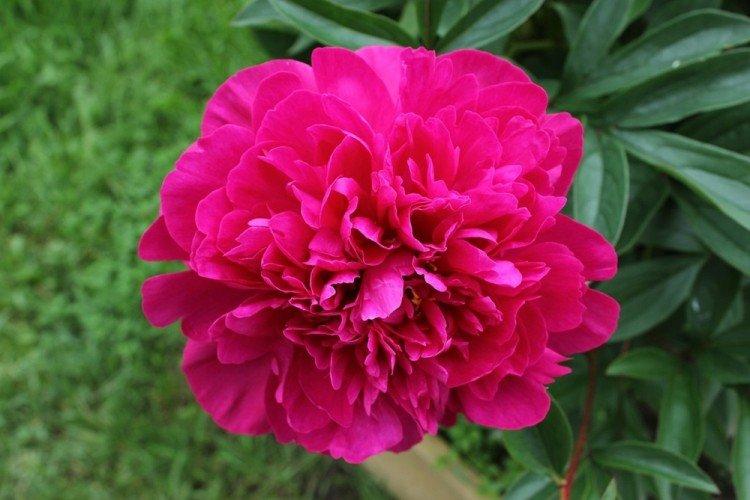
Japanese peonies
These varieties have slightly modified stamens that form an elastic pompom. The number of layers of petals depends entirely on the variety, but usually there are not very many of them. Burgundy, almost inky peony Hot Chocolat or white tall Carrara looks perfect.
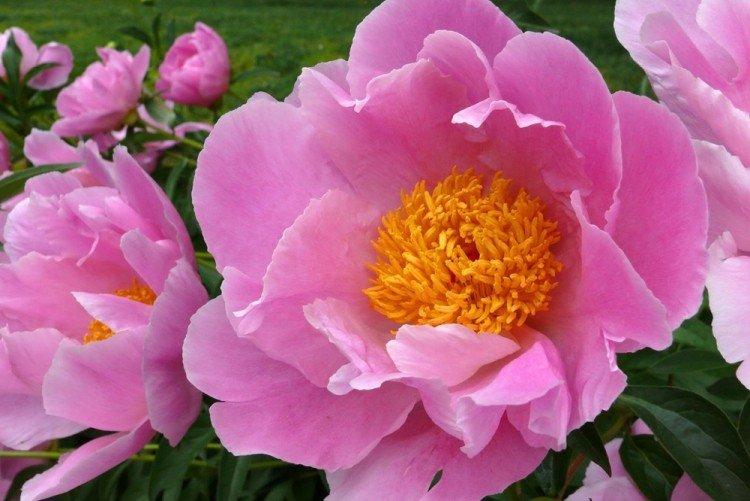
Anemone peonies
These varieties combine the characteristics of Japanese and terry peonies. The wide and rounded lower petals seem to frame the more delicate and petite upper ones, which form a ball. Two-tone peonies Rhapsody with pink and yellow flowers and a large creamy Snow Mountain look interesting.
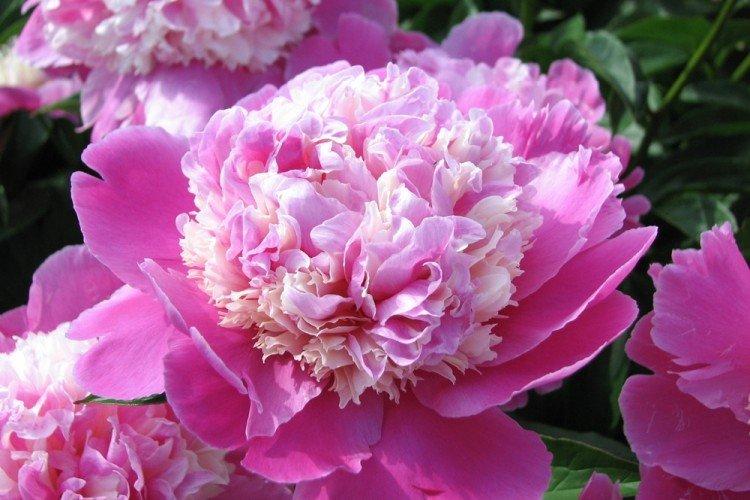
Peony care
It may seem that peonies, with their exquisite beauty, are very moody. But in reality this is not so, because more unpretentious garden residents still need to look.
Temperature
Peonies feel great in temperate latitudes and do not need any insulation. At a temperature of 0-10 degrees, roots begin to actively grow - this is the so-called "cold start" when planting. In winter, the upper part of the herbaceous varieties dies off, but the tree-like ones cope with it.
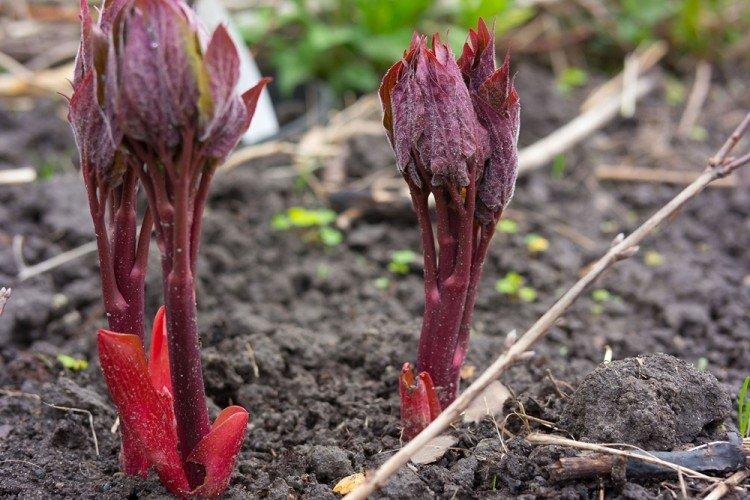
Lighting
Peonies love the sun, so they only need a little shade for a couple of hours on the hottest days.They do not tolerate winds and winter drafts. The bush can grow in one place for more than ten years, so choose the location carefully.
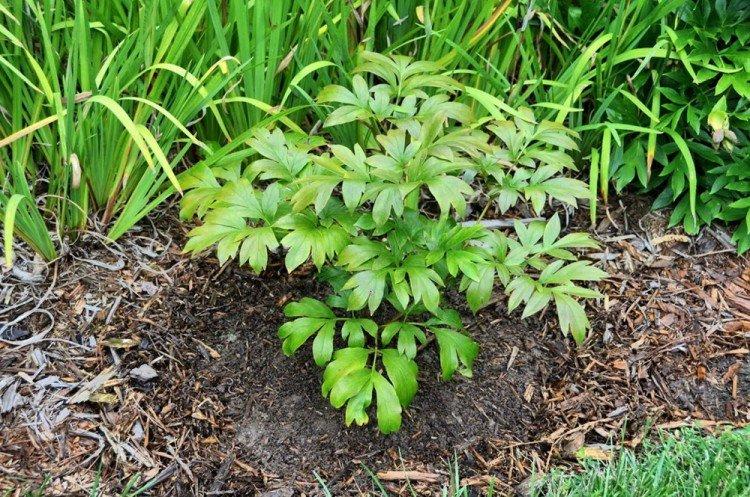
Watering
There is no need to water the peonies in winter, so build a schedule starting in early spring when the soil thaws. At this time, add a little potassium permanganate to awaken and disinfect the root system. Peonies need infrequent, but abundant watering, so for a hot summer it is about 30 liters under a bush every 10 days.
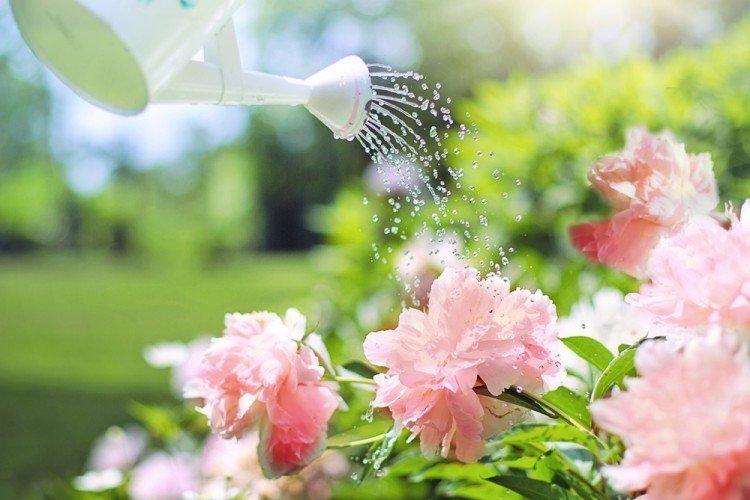
The soil
Peonies do not tolerate too marshy and moist soil, as well as high groundwater levels. This provokes rotting and fungal diseases that can destroy even perennial shrubs. Use special garden soil and remember to mulch it with compost or grass cuttings.

Fertilizers and feeding
In terms of fertilizers, peonies are also unpretentious, but they are rather "gluttonous" and absorb a lot of nitrogen and potassium. The first feeding is definitely needed in early spring to stimulate awakening. The second - with special complexes for flowers during the laying of buds. The third top dressing is laid towards the end of summer to lay the resources for autumn root growth.
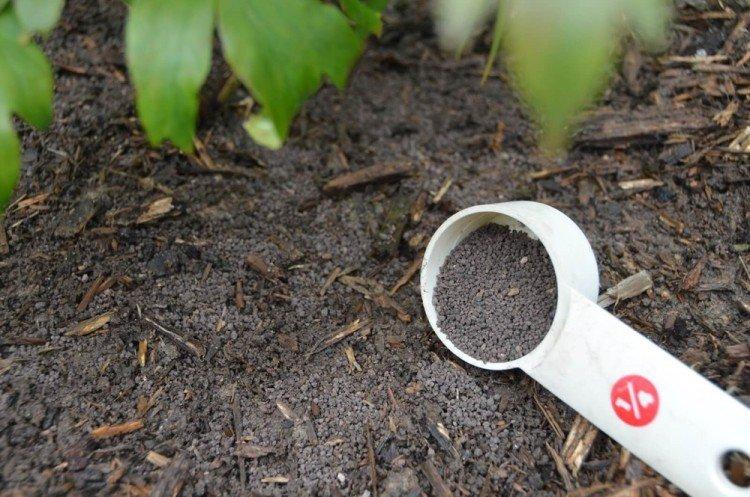
Transplant and reproduction
We recommend planting peonies closer to autumn, because they are just starting the phase of active growth of the rhizome. Cool, wet weather stimulates intensive rooting. As a result, closer to winter, the peony will already be completely ready for the cold weather and will delight you next year.
It is not very convenient to propagate peonies by seeds, because it will take more than 5 years before the first flowering. Not every gardener has the patience to wait! In addition, most species do not retain their varietal characteristics during such reproduction.
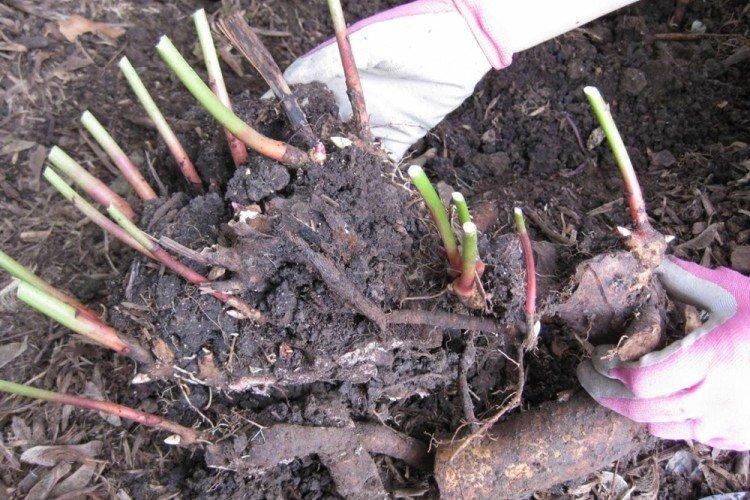
Most often, peony bushes are propagated by division during transplantation. One rhizome can be divided into 2-3 parts with 2-5 buds per division. Keep in mind that the root of old powerful bushes will be difficult to disassemble - you may even need a crowbar.
Root cuttings are cut directly at the ground with a sharp knife and immediately planted in a nutritious soil. Stem cuttings are harvested in early summer and planted in a substrate in a small greenhouse. Remove the film after three months, when the roots are firm.
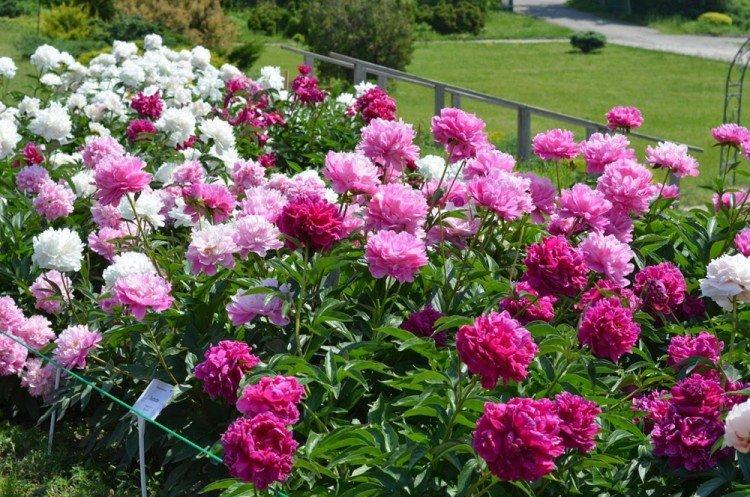
Preparing for winter
Closer to cold weather, cut annual peonies right to ground level, and use the dried tops in winter for insulation. Only the leaves must be healthy, otherwise it is better to take compost or peat. Only young bushes need to be insulated, because perennials cope with it.
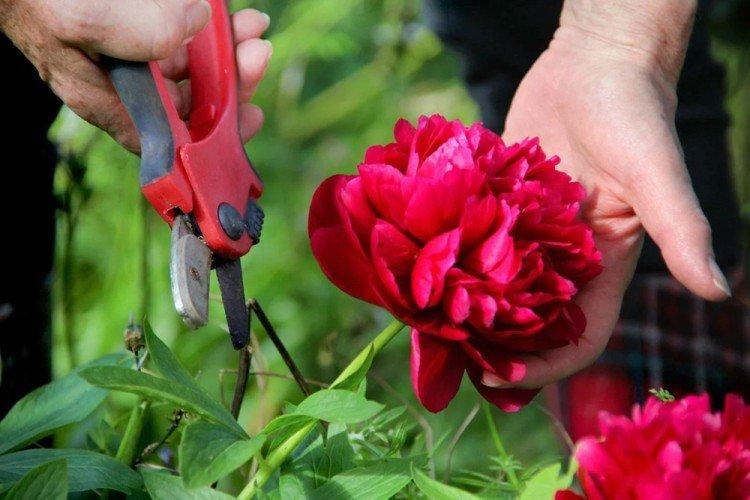
Pest and disease control
Peonies suffer from gray mold, powdery mildew and other fungal diseases. They are associated with an excess of moisture in the soil, with improper care, too much nitrogen or a lack of space. The disease manifests itself in a gray bloom on the leaves, stems and buds. The affected fragments must be removed as soon as possible, burned, and all places must be treated with fungicides.
From the end of spring, bronze is especially dangerous for peonies, which eats leaves, stems and petals. Plant roots can infect nematodes hiding in swollen stem nodes. Aphids and thrips mercilessly drink all the juices from the flowers, and ants gnaw the petals. Don't forget about insecticide prophylaxis and regular inspection of your seedlings!
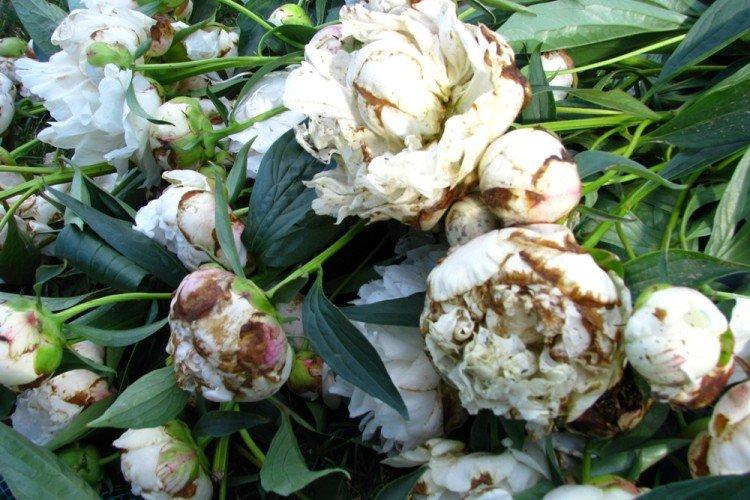
Peonies - photo
The beauty and spectacular appearance of peonies cannot be challenged even by the most severe critics. Just take a look at this selection of photos!
